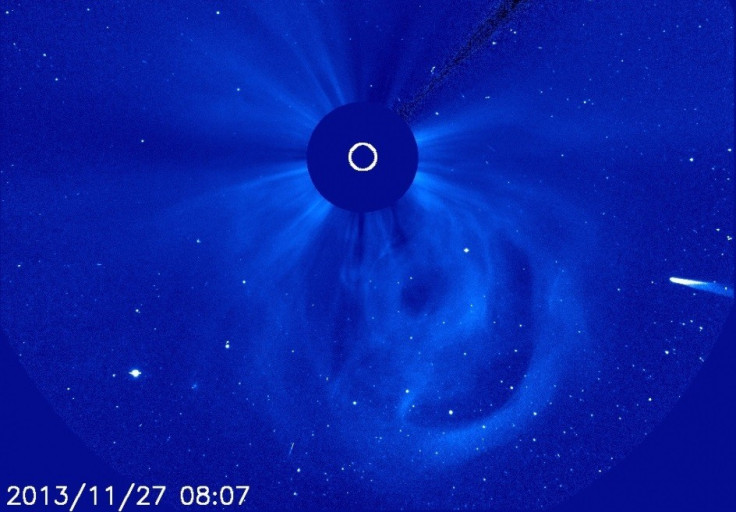Comet Ison: Will Flip of Sun's Magnetic Field Affect Comet of the Century? [VIDEO]
D-Day for astronomers with Comet Ison just hours away from perihelion

Comet Ison is just hours away from perihelion - the point at which it is closest to the sun - and its fate will be decided. It will either break up or stay intact.
The chances of it making the return journey past Earth are fairly even. Nasa has released images from its Solar and Heliospheric Observatory (Soho) showing Ison's approach.
"Has Comet Ison broken up? It is still unclear," Nasa said. "We'll only know for sure after the comet rounds the sun on Thanksgiving Day."
As well as extreme temperatures and gravitational forces from the sun, Ison is also potentially facing a further challenge - making its journey at a time when the sun's magnetic field flips.
Earlier in November, Nasa announced that the magnetic field would flip upside down "within weeks", a phenomenon that happens every 11 years. Ahead of the flip, the sun has become increasingly active, creating several X-class solar flares - the most intense flares.
Prof Mark Bailey, director of the Armagh Observatory in Northern Ireland, told IBTimes UK that the reversal of the sun's magnetic polarity could have an effect on Ison.
"The sun is quite active at the moment. Some sunspots have the capacity to eject flares or coronal mass ejections. If one advances in a solar wind and were to strike the comet, the most likely thing to happen is that the tail will undergo a disconnection event.
"The tail will be dragged away by the sun's magnetic field and disconnected for a short time from the regenerated tail - the tail is continually regenerated. It will not be pushed very far to one side - it would be more of a small glitch."

Bailey added that the chance of a solar flare hitting Comet Ison was very small: "Unless something happens to it when it's very close to the sun, I don't think it's likely. The comet is like a cannonball going through the atmosphere, and even the head of the comet has got a lot more density than the sun's atmosphere except when it's very close."
A report by the International Astronomical Union said that the comet appeared to be decreasing in brightness this is nothing to worry about.
Bailey said: "There's no evidence that the comet has broken up, but in the Soho images, you see the curved dust tail and rather straighter gas tail. Part of the dust tail seems to be comprised of relatively larger particles. Whether they'll survive [is not known]. It does indicate that the comet has been active for a long time and that the dust tail and gas tail will be quite prominent after perihelion.
"A lot hinges on the intrinsic strength of the nucleus. If it's held together only by gravity then it's conceivable that it might break up and turn into a small number of fragments, each of which will survive and therefore diminish the spectacle. If it's held together by sold body forces then it'll certainly survive.
"We'll just have to wait and see how it looks in another 24 hours and hope it survives."
Read more:
Comet Ison Particles to Provide Cosmic Time Capsule as Moment of Truth Approaches
Comet of the Century: Ison Could Hold Clues to Life on Earth
Death of Ison: Comet of the Century to Fizzle and 'Break Up'
Ison to Become First Comet Visible in Daylight for 330 Years
© Copyright IBTimes 2025. All rights reserved.






















